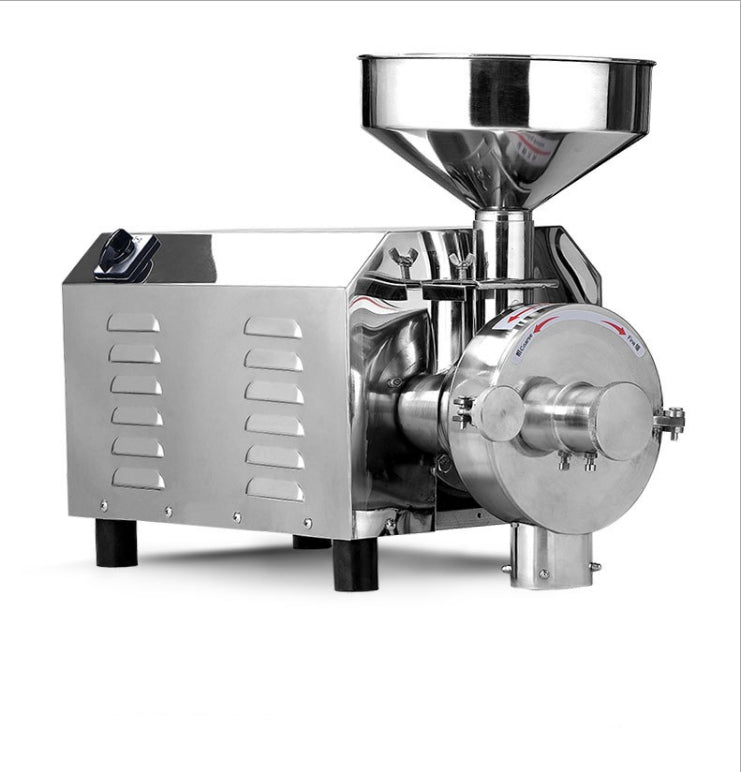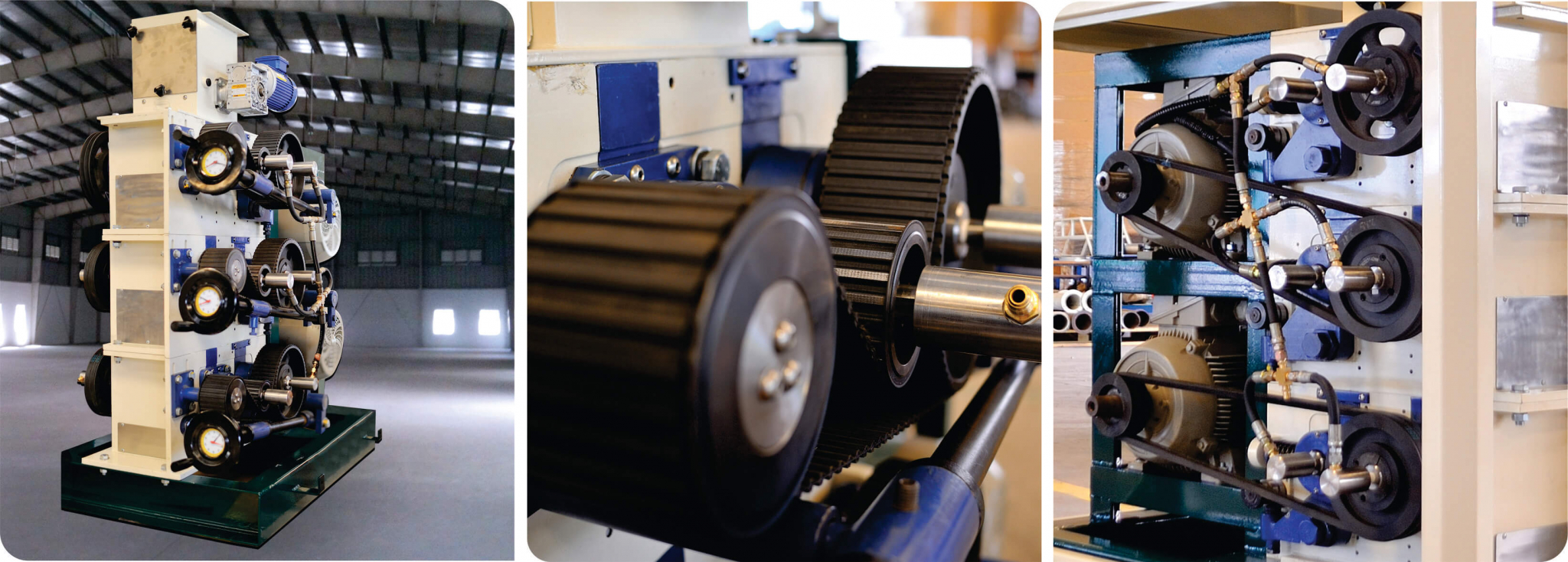Reasons Every Café Should Have an Industrial Coffee Grinder
Reasons Every Café Should Have an Industrial Coffee Grinder
Blog Article
How to Select the Perfect Industrial Coffee Grinder for Your Service
Choosing the perfect commercial coffee grinder for your business is a diverse choice that requires cautious consideration of several vital aspects. In addition, recognizing the numerous types of mills available can considerably affect your functional effectiveness.
Assess Your Grinding Needs
When picking an industrial coffee mill, one need to first examine their grinding requirements to ensure ideal efficiency and uniformity. This first analysis entails recognizing the volume of coffee to be processed daily, along with the preferred grind size for numerous developing approaches. A high-capacity grinder may be required for services serving huge amounts of coffee, while smaller procedures might find an extra portable design enough.
In addition, it is important to take into consideration the sorts of coffee beans being made use of, as various beans might need certain grinding techniques to achieve the most effective flavor account. For example, oily beans might demand a grinder designed to manage such qualities without overheating or clumping.
Specialty coffee services frequently require exact grind dimensions to enhance removal and taste, making it essential to choose a mill that can provide uniform results. Reviewing the available space and electrical requirements will certainly aid in selecting a mill that fits effortlessly right into your functional process.
Understand Grinder Kind
Recognizing the various types of commercial coffee grinders is vital for making an informed choice that fulfills particular functional requirements. There are largely 2 categories of mills: blade mills and burr grinders.
Blade mills utilize rotating blades to slice the coffee beans, leading to an inconsistent work dimension - Industrial Coffee Grinder. While they may be more cost effective, they are frequently not appropriate for business applications where accuracy is necessary
On the other hand, burr grinders offer a more consistent grind by crushing the beans in between two surface areas. They can be more classified into flat burr and conelike burr grinders. Flat burr mills use a regular work dimension and are commonly favored for espresso preparation, while cone-shaped burr grinders are flexible and can take care of an array of mixture approaches, from espresso to French press.
When picking a grinder, consider the specific needs of your organization, including wanted grind uniformity, manufacturing quantity, and the sorts of coffee drinks you plan to use - Industrial Coffee Grinder. Each grinder kind has its benefits and restrictions, so recognizing these subtleties enables educated decision-making that straightens with operational objectives
Evaluate Work Dimension Uniformity
Accomplishing work size consistency is vital for producing top notch coffee, as variations in particle size can substantially influence extraction and flavor. When picking an industrial coffee grinder, it is crucial to assess exactly how well the device maintains harmony in work dimension across various sets. Inconsistent work dimensions can result in irregular removal, causing a mug that might taste overly bitter or weak.
To evaluate work size uniformity, think about mills with functions such as adjustable grind setups and premium burrs. Burr grinders, in particular, master producing consistent fragment sizes compared to blade mills. The product and form of the burrs play a vital role, with stainless steel and ceramic options offering longevity and accuracy.

Consider Production Capacity
In the busy world of coffee manufacturing, thinking about production capacity is critical for organizations aiming to fulfill demand without compromising high quality. The production capacity of a commercial coffee mill directly affects a firm's ability to satisfy orders successfully, manage supply, and react to fluctuating market trends.
When evaluating production capacity, it is vital to review the mill's output price, typically measured in pounds per hour. This dimension should line up with your service's predicted sales quantity and growth targets. A café with a high turn over might call for a grinder that can process several hundred pounds daily, while a smaller sized operation may be sufficient with a reduced capacity design.
Additionally, consider the sort of coffee being processed. Different see post beans and blends may impact grinding rate and effectiveness, requiring a grinder capable of taking care of varied production demands. It's likewise worth factoring in the grinder's ability to maintain constant top quality under high result problems, as any type of fluctuations can impact the final item.
Ultimately, picking a mill that matches your service's production ability will guarantee you stay responsive and affordable to customer assumptions.

Budget Plan and Upkeep Elements
When reviewing the ideal commercial coffee spending plan, maintenance and grinder variables play a substantial duty in the overall decision-making procedure,. An initial investment in a top quality mill can generate lasting benefits, however it's necessary to develop a clear budget that lines up with your company's operational requirements. Take into consideration both the acquisition cost and possible functional prices, such as power consumption and substitute parts.
Maintenance is another critical aspect that can impact your spending plan. Industrial coffee mills call for routine maintenance to make certain ideal efficiency and longevity. Review the supplier's suggestions for upkeep, consisting of cleaning routines and components replacement, as these will affect lasting operational costs. Additionally, take into consideration the accessibility of solution and assistance, as reliable support can minimize downtime and repair service expenses.

Investing in a mill that is durable yet very easy to keep can save cash gradually. While lower-priced alternatives might be alluring, they may incur higher upkeep costs and minimized performance. Eventually, stabilizing first expenses with long-term upkeep and have a peek here operational performance will certainly guide you to the most effective option for your business's coffee grinding needs.
Final Thought
Selecting the ideal industrial coffee mill demands a detailed assessment of grinding demands, mill kinds, grind dimension consistency, manufacturing capability, and budgetary considerations. By focusing on these aspects, organizations can make sure the procurement of a reliable, reliable mill that fulfills particular operational demands. A well-chosen grinder not only boosts the quality of the coffee produced however additionally adds to the total success and useful site profitability of the business. Lasting performance and maintenance ease should stay central to the decision-making process.
Specialty coffee organizations commonly demand accurate work sizes to boost removal and flavor, making it vital to select a mill that can supply uniform results. Flat burr grinders supply a constant work size and are usually preferred for coffee preparation, while cone-shaped burr mills are flexible and can handle a range of mixture methods, from espresso to French press.
When picking a commercial coffee mill, it is important to examine exactly how well the equipment maintains uniformity in work dimension across different batches. Burr mills, in certain, excel in producing uniform particle dimensions compared to blade grinders.Choosing the optimal industrial coffee grinder necessitates a complete analysis of grinding demands, mill types, grind dimension consistency, production capacity, and budgetary factors to consider.
Report this page